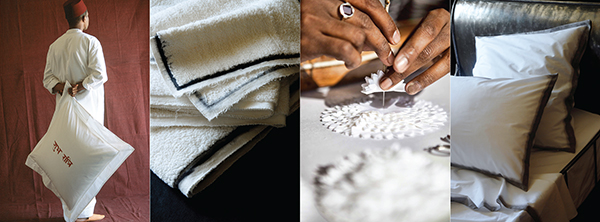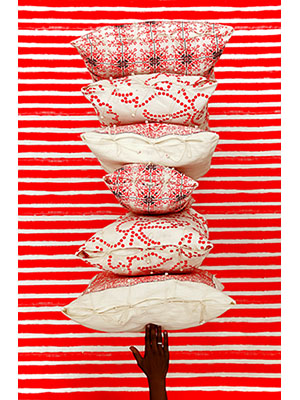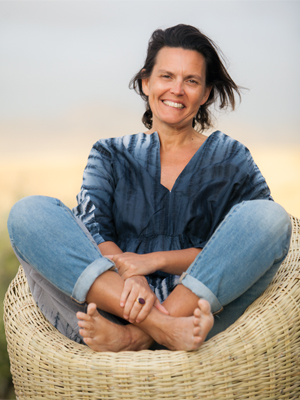
The Designer Who Weaves Stories
Valerie Barkowski's works are more than mere designs
Valerie Barkowski is “hundred percent Belgian”. But you would not be able to say so from her work.
Her designs, textiles and textures are a true reflection of the lands—India and Morocco— she has travelled through and has made her own. “I think a ‘designer’ is a narrow definition for me. What is driving me is the need to build concepts and stories; designing is just one aspect of it,” she says over the phone from Marrakech. “Whether it is a brand, or a store, or a guest house—like the one I am working on in Marrakech—designing is only a part of the process.”
Although from Europe, and having lived in Russia for three years, Barkowski has made Morocco her home. “When I first visited Morocco in 1991, I knew that this is where I would want to live one day.” And live she did, building her signature brands—Mia Zia and V. Barkowski—of textiles, colours and patterns, inspired entirely from local traditions and craftsmanship.
Barkowski’s India connection dates back to more than two decades ago when—disillusioned with the narrow structure of the formalised teaching of art in institutions—she dropped out of college and travelled through India for three months. “I came from a comfortable life in Europe, living very close to nature. When I came to India, it was a complete shock for me. It literally changed my life; I came back another person.” The next visit to India took place about 18 years later, but little of what she felt about the country had changed. “I had come on a 15-day trip, but stayed on for three months. And when I returned, I slept for three days and three nights. Because in those three months I was so excited that I did not sleep.”
Barkowski’s formal relationship with India blossomed through her role of, first, the creative head of Bandit Queen, Synergy Home Furnishings and Accessories (an export-oriented company), and then as the creative head of No-Mad, the online only home décor brand. What unites these two associations of Barkowski’s is the fact that the resulting products are quintessentially India in character (No-Mad describes itself as “97 percent India”; the remaining 3 percent being Barkowski herself).

Whether it was the home textile venture that she started in Russia, or her work in Morocco, bringing in local artisans has been a critical element in her designs. “In Russia, I got linen and got them designed with patchwork and embroidery by the old babushkas [elderly women] in the countryside of Moscow. And that is how my philosophy took root even without me knowing it. These products you can still use in your home because they are timeless,” she says. “When I started designing linen, mainly bath towels, with pompoms in Morocco, it was after a trip to northern Morocco where I saw women wearing a kind of fabric around their waist when they went to the fields. I sold the first such towel 17 years ago, and I am still selling them.”

Image: Tania Panova
At 50, Barkowski believes she is at a stage where she is concerned about what she wants to do with the rest of her life. “When you are young, you have the need to get recognition and success, you need to prove what you can do, you have ego. But as you get older, you realise what you are good at, and what you are bad at,” she says. “I have got some amount of recognition, and success. But now my ego has got somewhat diluted. Even two years ago, I would not be thinking the way I do today. About what I want to do with my life.”
(This story appears in the Nov-Dec 2014 issue of ForbesLife India. To visit our Archives, click here.)















